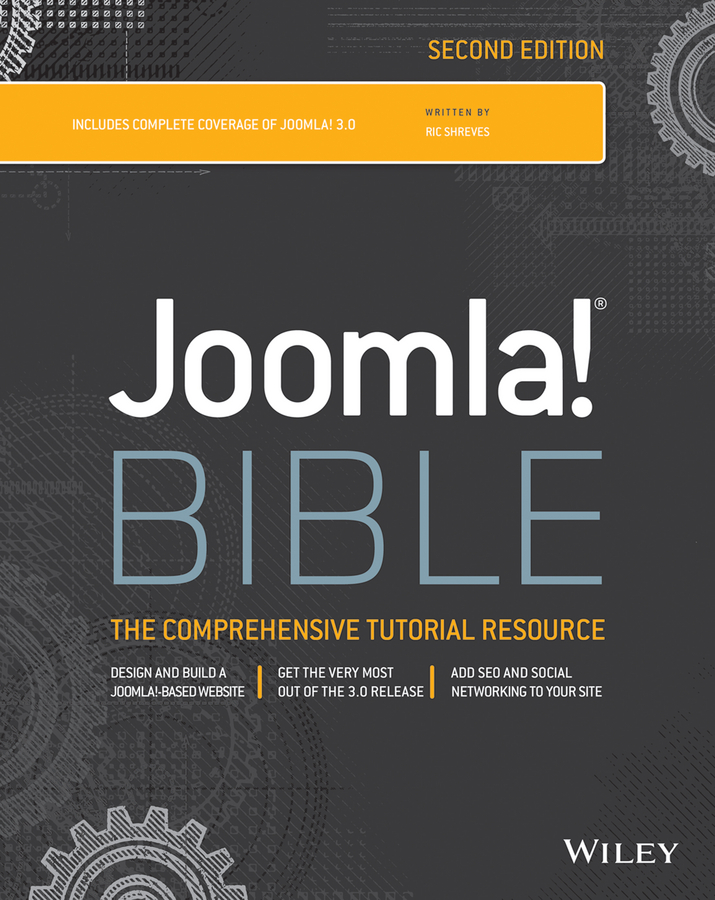
Joomla! Bible, Second Edition PDF
Preview Joomla! Bible, Second Edition
Your complete guide to the Joomla! content management system
Whether you use Joomla! to power a website, intranet, or blog, you'll need a good how-to reference on this complex, but not always intuitive, content management software. Joomla! Bible, Second Edition is that book. It not only brings you up to speed on the changes and extensions that are now part of Joomla! 3.0, it thoroughly covers functions and tasks, including installation, configuration, management, advanced modules, and extended coverage of two key extensions.
You'll learn how to obtain code and deploy it to a server; how to obtain, modify, and delete content; how to choose between the Joomla! Platform and the Joomla! CMS; and more. By the time you finish the Joomla! Bible, Second Edition, you'll be well prepared to build and maintain a Joomla!-based website.
- Walks you through obtaining the Joomla! 3.0 code and how to deploy it to a server, configure the site, create content, and manage content and user hierarchies
- Helps you get the most out of core modules that provide advanced functionality, including the Polls Module, the Banner Manager, Content Syndication, Newsfeed Aggregation, and others
- Includes hands-on tutorials and real-world practical applications
Whether you're a content manager, website manager, developer, or do-it-yourselfer, make sure you keep Joomla! Bible, Second Edition on hand.
Ric Shreves is a freelance writer and web applications development consultant. His company, water & stone (www.waterandstone.com), specializes in the creation of websites using open source content management systems and has deployed hundreds of websites on the Joomla! system. A past president of the Mambo Foundation, Ric is also the author of several books, including the previous edition of the Joomla! Bible. He has worked as a columnist for ComputerWorld and written for a number of tech publications.
Table of contents
Acknowledgments xxi
Introduction xxiii
Part I: Getting Started with Joomla! 1
Chapter 1: Introducing the Joomla! Content Management System 3
Chapter 2: Obtaining and Installing Joomla! 17
Chapter 3: Taking a First Look at Joomla! 33
Chapter 4: Getting the Most from Site Configuration 51
Part II: Working with Content and Users 69
Chapter 5: Managing Content 71
Chapter 6: Working with Editors and Media 127
Chapter 7: Employing Advanced Content Management Techniques 147
Chapter 8: Working with the Menu System 175
Chapter 9: Managing the Home Page of Your Site 229
Chapter 10: Managing Your Site’s Users 243
Chapter 11: Creating a Multilingual Website 273
Part III: Working with Components, Modules, and Plug-Ins 289
Chapter 12: Using the Banner Manager 291
Chapter 13: Working with the Contacts Component 327
Chapter 14: Using the Newsfeed Component 355
Chapter 15: Using the Site Search Components 379
Chapter 16: Using the Weblinks Component 397
Chapter 17: Working with the Site Modules 421
Chapter 18: Working with the Administrator Modules 461
Chapter 19: Working with Plug-Ins 485
Part IV: Customizing and Extending the System 527
Chapter 20: Customizing the Appearance of Joomla! 529
Chapter 21: Customizing Joomla! Functionality 573
Chapter 22: Extending Your Site 603
Part V: Overseeing Website Maintenance and Management 623
Chapter 23: Keeping Your Site Secure and Up to Date 625
Chapter 24: Managing Performance and Accessibility 641
Chapter 25: Making a Site Search–Engine Friendly 661
Part VI: Appendixes 669
Appendix A: Choosing a Sample Data Set 671
Appendix B: Locating Key Files 681
Appendix C: Installing XAMPP 685
Appendix D: Installing MAMP 687
Appendix E: Implementing e-Commerce with VirtueMart 689
Index 693
